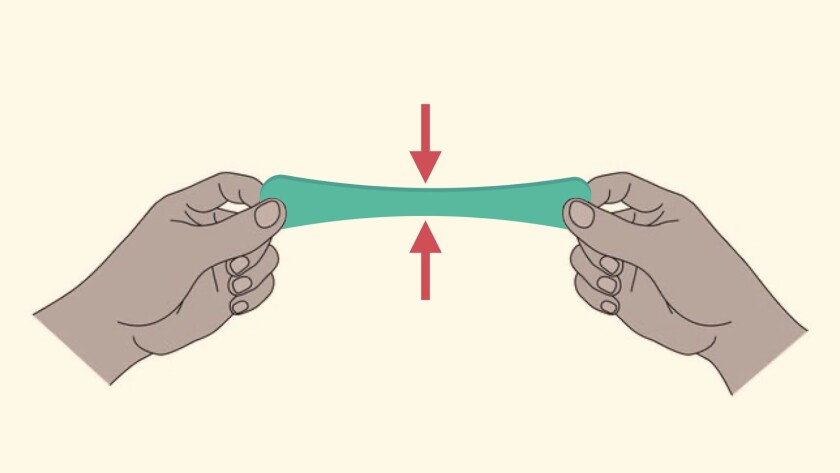What is Quantum Tunneling Theory and how is the BYU Applied Biomechanics Engineering Laboratory leveraging it?
The BYU Applied Biomechanics Engineering Laboratory in conjunction with Dr. Fullwood and his lab are building sensors to revolutionize how injuries are diagnosed, but in order to understand how they work, you first need to understand Quantum Tunneling Theory. Sound complicated? Don’t worry, we’ll explain it using gifs!
Let’s imagine you are at the top of a valley. If you drop a ball down the valley you wouldn’t expect the ball to roll up the other side any higher than where you dropped it from. It simply doesn’t have enough energy to go any higher.

But at a quantum level, things work a bit differently. Particles do not have a defined position until they are observed, and instead are described by a wave function. The greater the amplitude of the wave at a given point, the more likely the particle is to end up in that position. Going back to our valley analogy, that means that while the ball is likely to end up in the valley, there is a small chance that it could end up on the other side of the hill even though it shouldn’t have enough energy to get there.

Each sensor is made up of thousands of electrically conductive nanocomposite particles that are spaced out across a silicone matrix. An electrical charge is sent through the sensor and because of Quantum Tunneling, the electrons are able to jump over the gaps between the particles in the sensor and carry the current.
“If there is enough energy in the electron wave, the electrons can actually jump over the barrier and come out on the other side.”
- David Wood, a graduate student working on this project
While others are working on sensor technologies that similarly leverage the exciting benefits of quantum tunneling, the amount of electricity that flows through their sensors only changes slightly when stretched. Our lab’s design is unique because when it is stretched, the electrical flow through the sensor increases by 6 orders of magnitude. So what is different about our sensors?
Nickel coated carbon fibers, which are much larger and longer than the other particles, are added to the sensor serving as bridges between small clusters of nanocomposite particles. To continue our analogy, this is the equivalent of having a highway that goes around the hill.

When the sensor is stretched, the sides of the sensors pull in towards each other, effectively pulling the particles closer, and thus reducing the barrier height that the electrons need to overcome between each particle. This makes it much easier for electricity to flow through it, increasing the number of electrons that make it across the sensor. This electrical current is then measured to determine if, and to what extent the sensor was stretched.

While these sensors that our team has developed have many applications, some of the most exciting applications are in healthcare. For example, we are currently researching ways to use these sensors to provide biofeedback to physical therapy patients and to help diagnose the causes of chronic low back pain. This new type of sensor is much more cost-effective than current diagnosing methods such as MRIs (each sensor only uses a few pennies worth of material) and would also be more comprehensive since it collects data while the patient is moving, as opposed to the static measurements obtained by medical imaging which can only be obtained while a patient is lying still on their back!